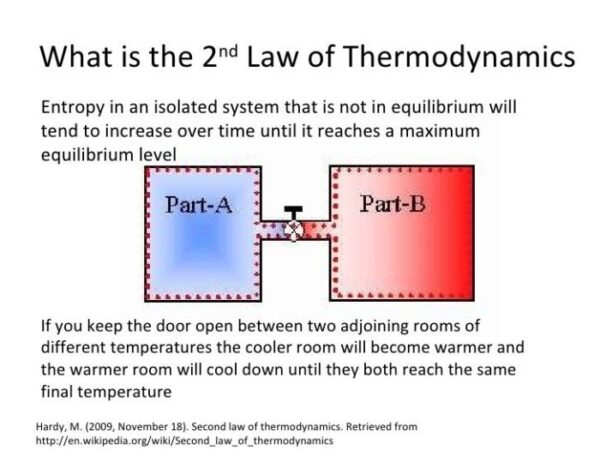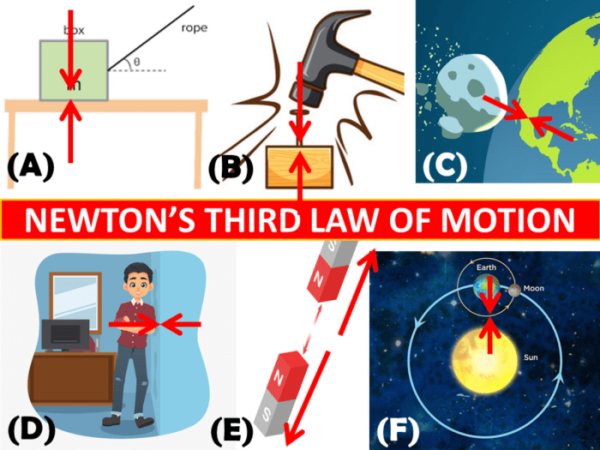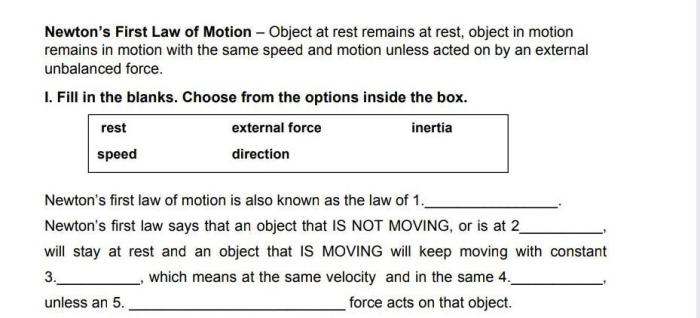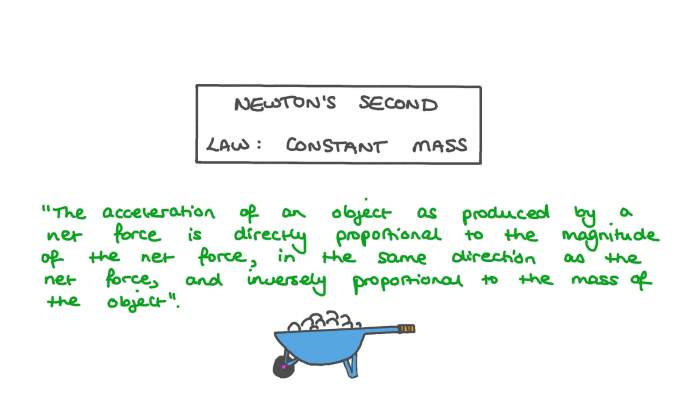
- Fundamental Laws of Physics
-
Laws of Electromagnetism: What Are The Laws In Physics
- Maxwell’s Equations and the Relationship Between Electricity and Magnetism
- Examples of Electromagnetic Forces in Everyday Life
- Properties of Electromagnetic Waves
- Applications of Electromagnetic Waves
- Fundamental Principles of Electromagnetism and Their Relevance in Modern Technology, What are the laws in physics
- Laws of Relativity
- Laws of Nature and their Applications
- Final Thoughts
- FAQ Overview
What are the laws in physics? This fundamental question has driven scientific inquiry for centuries, leading to a profound understanding of the universe and its intricate workings. From the motion of celestial bodies to the behavior of subatomic particles, physics provides a framework for explaining the world around us.
Physics delves into the fundamental building blocks of the universe, exploring the forces that govern interactions between matter and energy. It investigates the laws that describe motion, gravity, electromagnetism, and the quantum realm, revealing the intricate tapestry of nature.
Fundamental Laws of Physics
The laws of physics are fundamental principles that govern the behavior of matter and energy in the universe. They are based on extensive observation, experimentation, and mathematical analysis. These laws provide a framework for understanding the natural world and predicting how things will behave under various conditions.
Newton’s Laws of Motion
Newton’s Laws of Motion are a set of three laws that describe the relationship between the motion of an object and the forces acting upon it. These laws are fundamental to classical mechanics and have numerous applications in various fields, including engineering, aerospace, and everyday life.
- Newton’s First Law of Motion (Law of Inertia): An object at rest stays at rest, and an object in motion stays in motion with the same speed and in the same direction unless acted upon by an unbalanced force. This law describes the tendency of objects to resist changes in their state of motion. For example, a ball at rest will remain at rest unless someone kicks it. Similarly, a car moving at a constant speed will continue moving at that speed unless the brakes are applied or the engine stops.
- Newton’s Second Law of Motion: The acceleration of an object is directly proportional to the net force acting on it and inversely proportional to its mass. This law quantifies the relationship between force, mass, and acceleration. Mathematically, it is represented as F = ma, where F is the net force, m is the mass, and a is the acceleration. For example, a heavier object requires a greater force to accelerate it compared to a lighter object.
- Newton’s Third Law of Motion: For every action, there is an equal and opposite reaction. This law describes the interaction between two objects. When one object exerts a force on another object, the second object exerts an equal and opposite force on the first object. For example, when you push a wall, the wall pushes back on you with the same force.
Law of Universal Gravitation
Newton’s Law of Universal Gravitation describes the attractive force between any two objects with mass. This force is directly proportional to the product of their masses and inversely proportional to the square of the distance between their centers.
F = G (m1m2)/r2
where:
* F is the force of gravity
* G is the gravitational constant (6.674 × 10-11 m3 kg-1 s-2)
* m1 and m2 are the masses of the two objects
* r is the distance between their centers
This law explains why objects fall to the ground, why planets orbit the sun, and why galaxies are held together. For example, the Earth is held in orbit around the sun due to the gravitational force between the two bodies. The moon orbits the Earth for the same reason. The force of gravity also plays a crucial role in the formation of stars and planets.
Conservation of Energy and Momentum
The principles of conservation of energy and momentum are fundamental to understanding the behavior of physical systems.
- Conservation of Energy: Energy cannot be created or destroyed, only transformed from one form to another. This principle states that the total energy of a closed system remains constant over time. For example, when a ball is dropped, its potential energy is converted into kinetic energy as it falls. Similarly, in a power plant, chemical energy stored in fuels is converted into electrical energy.
- Conservation of Momentum: The total momentum of a closed system remains constant. Momentum is a measure of mass in motion, and it is calculated by multiplying an object’s mass by its velocity. For example, in a collision between two objects, the total momentum before the collision is equal to the total momentum after the collision. This principle is used in many applications, such as designing rockets and understanding the behavior of particles in nuclear reactions.
Thermodynamics
Thermodynamics is a branch of physics that deals with heat and its relation to other forms of energy. It is based on four fundamental laws that describe the behavior of energy transfer and transformation in physical systems.
- Zeroth Law of Thermodynamics: If two systems are each in thermal equilibrium with a third system, then they are also in thermal equilibrium with each other. This law establishes the concept of temperature as a measure of thermal equilibrium.
- First Law of Thermodynamics: The change in internal energy of a closed system is equal to the heat added to the system minus the work done by the system. This law is essentially a statement of the conservation of energy, applied to heat and work.
- Second Law of Thermodynamics: Heat cannot spontaneously flow from a colder body to a hotter body. This law states that the entropy of a closed system always increases over time. Entropy is a measure of disorder or randomness in a system.
- Third Law of Thermodynamics: The entropy of a system approaches a constant value as the temperature approaches absolute zero. This law states that it is impossible to reach absolute zero temperature.
Thermodynamics has wide-ranging applications in various fields, including engineering, chemistry, and biology. It is used to design engines, understand chemical reactions, and study the behavior of living organisms. For example, the principles of thermodynamics are used to design refrigerators, power plants, and internal combustion engines.
Laws of Electromagnetism: What Are The Laws In Physics
Electromagnetism is a fundamental force of nature that describes the interaction between electrically charged particles. It governs the behavior of electric and magnetic fields, and their influence on matter. This intricate relationship is beautifully encapsulated in Maxwell’s equations, a set of four fundamental equations that form the foundation of classical electromagnetism.
Maxwell’s Equations and the Relationship Between Electricity and Magnetism
Maxwell’s equations, formulated by James Clerk Maxwell in the 19th century, elegantly describe the interconnected nature of electricity and magnetism. These equations demonstrate how changing electric fields generate magnetic fields, and vice versa.
Maxwell’s equations are:
- Gauss’s law for electricity: This equation describes the relationship between the electric field and the distribution of electric charges. It states that the total electric flux through a closed surface is proportional to the enclosed electric charge.
- Gauss’s law for magnetism: This equation states that there are no magnetic monopoles, meaning that magnetic fields always form closed loops.
- Faraday’s law of induction: This equation describes how a changing magnetic field induces an electromotive force (EMF), which can drive an electric current.
- Ampère-Maxwell’s law: This equation describes how electric currents and changing electric fields generate magnetic fields.
Examples of Electromagnetic Forces in Everyday Life
Electromagnetic forces are at play in numerous aspects of our daily lives, often in ways we may not even realize.
- Electricity: The flow of electrons through wires, powering our homes and devices, is a direct result of electromagnetic forces.
- Magnetism: Magnets, used in everything from refrigerator magnets to compasses, are a manifestation of magnetic fields.
- Light: Light itself is an electromagnetic wave, a combination of oscillating electric and magnetic fields that travel at the speed of light.
- Radio waves: These waves, used for communication and broadcasting, are another form of electromagnetic radiation.
- Microwaves: Microwaves used in ovens to heat food are also a type of electromagnetic radiation.
Properties of Electromagnetic Waves
Electromagnetic waves, like light, are disturbances that propagate through space at the speed of light. These waves exhibit several key properties:
- Frequency: The number of wave cycles that pass a given point per second. Frequency is measured in Hertz (Hz).
- Wavelength: The distance between two successive crests or troughs of a wave. Wavelength is typically measured in meters (m).
- Amplitude: The maximum displacement of a wave from its equilibrium position. Amplitude is related to the intensity of the wave.
- Polarization: The direction of the electric field oscillations in an electromagnetic wave.
Applications of Electromagnetic Waves
Electromagnetic waves have numerous applications in various fields:
- Communication: Radio waves, microwaves, and infrared waves are used for wireless communication, broadcasting, and satellite communication.
- Medicine: X-rays are used for medical imaging, while ultraviolet radiation is used for sterilization.
- Industry: Lasers are used for cutting, welding, and measuring, while infrared radiation is used for heat sensing and night vision.
- Research: Electromagnetic waves are used in spectroscopy, astronomy, and particle physics.
Fundamental Principles of Electromagnetism and Their Relevance in Modern Technology, What are the laws in physics
The fundamental principles of electromagnetism have revolutionized modern technology, leading to the development of countless devices and innovations.
- Electric motors: These devices convert electrical energy into mechanical energy, utilizing the interaction between magnetic fields and electric currents. Electric motors power countless machines, from electric vehicles to industrial robots.
- Generators: Generators convert mechanical energy into electrical energy, using the principle of electromagnetic induction. Power plants rely on generators to produce electricity for our homes and industries.
- Electronics: Transistors, diodes, and integrated circuits, the building blocks of modern electronics, are based on the principles of electromagnetism.
- Telecommunications: From mobile phones to the internet, telecommunications rely heavily on electromagnetic waves for transmitting information.
- Medical imaging: Magnetic resonance imaging (MRI) and computed tomography (CT) scans use electromagnetic fields to produce detailed images of the human body.
Laws of Relativity

Albert Einstein’s theory of relativity revolutionized our understanding of space, time, and gravity, profoundly impacting our comprehension of the universe. It comprises two main parts: special relativity and general relativity.
Special Relativity
Special relativity, published in 1905, deals with the relationship between space and time in the absence of gravity. It is based on two postulates:
* The laws of physics are the same for all observers in uniform motion.
* The speed of light in a vacuum is the same for all inertial observers, regardless of the motion of the light source.
These postulates have far-reaching consequences, leading to the concepts of time dilation and length contraction.
Time Dilation
Time dilation refers to the phenomenon where time passes at different rates for observers in different reference frames. This means that time can be relative, depending on the observer’s motion.
* For example, a clock on a spaceship traveling at a high speed would appear to tick slower than a clock on Earth. This effect is known as time dilation and is a direct consequence of special relativity.
Length Contraction
Length contraction is another consequence of special relativity, where the length of an object appears to be shorter when it is moving relative to an observer.
* For example, a spaceship traveling at a high speed would appear to be shorter in the direction of its motion when viewed from Earth.
General Relativity
General relativity, published in 1915, extends special relativity to include gravity. It describes gravity not as a force, but as a curvature of spacetime caused by the presence of mass and energy.
Curvature of Spacetime
According to general relativity, massive objects warp the fabric of spacetime, creating a gravitational field. This curvature affects the paths of objects moving in the vicinity of the massive object.
* For example, the Earth orbits the Sun because the Sun’s mass warps spacetime, causing the Earth to follow a curved path.
Black Holes
Black holes are regions of spacetime where gravity is so strong that nothing, not even light, can escape. They are formed when massive stars collapse at the end of their lives.
* General relativity predicts the existence of black holes, and observations have confirmed their presence in the universe.
The Big Bang
The Big Bang theory describes the origin of the universe, where the universe began as a very hot and dense state and has been expanding ever since.
* General relativity plays a crucial role in understanding the Big Bang, as it describes the evolution of the universe from its earliest moments.
Laws of Nature and their Applications
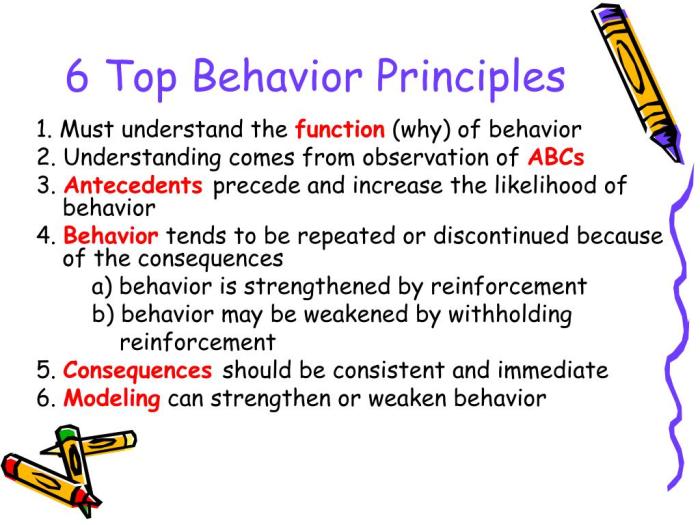
The laws of physics govern the behavior of the universe at all scales, from the subatomic to the cosmic. They are the fundamental principles that underpin our understanding of the world around us and have enabled us to develop incredible technologies that have transformed our lives.
The Fundamental Laws of Physics and their Applications
The laws of physics are not just abstract concepts; they have profound practical implications. These laws have been instrumental in developing technologies that have revolutionized various aspects of our lives, from medicine and engineering to communication and transportation.
| Law | Mathematical Representation | Applications |
|---|---|---|
| Newton’s Laws of Motion |
|
|
| Law of Universal Gravitation | F = Gm1m2/r2 |
|
| Laws of Thermodynamics |
|
|
| Maxwell’s Equations |
|
|
| Special Relativity |
|
|
| General Relativity | Rμν – (1/2)gμνR = 8πGTμν |
|
The Fundamental Forces of Nature
The universe is governed by four fundamental forces:
- Strong Force: This force binds quarks together to form protons and neutrons. It is the strongest force in nature, but it has a very short range, acting only within the nucleus of an atom.
- Electromagnetic Force: This force governs the interaction of charged particles. It is responsible for holding atoms together and for the interactions of light and matter. The electromagnetic force has an infinite range but weakens with distance.
- Weak Force: This force is responsible for radioactive decay and the fusion of hydrogen into helium in the sun. It is much weaker than the strong force and has a very short range.
- Gravitational Force: This force is the weakest of the four fundamental forces, but it has an infinite range. It is responsible for the attraction between objects with mass and for the structure of the universe.
Interconnections Between Different Branches of Physics
Physics is a vast and interconnected field. Different branches of physics, such as classical mechanics, electromagnetism, thermodynamics, and quantum mechanics, are closely related and often rely on each other. For example, classical mechanics provides the foundation for understanding the motion of objects, while electromagnetism explains the behavior of electric and magnetic fields. Quantum mechanics is essential for understanding the behavior of atoms and molecules, and thermodynamics provides a framework for understanding the flow of heat and energy.
Impact of Laws of Physics on Various Fields
The laws of physics have had a profound impact on various fields, including:
- Engineering: The laws of physics are essential for designing and building structures, machines, and systems. For example, engineers use Newton’s laws of motion to design bridges, buildings, and vehicles.
- Medicine: The laws of physics are used in medical imaging, such as X-rays, CT scans, and MRI. They are also used to develop medical devices, such as pacemakers and artificial hearts.
- Technology: The laws of physics have been instrumental in the development of many technologies, including computers, smartphones, and the internet. For example, the laws of electromagnetism are used to develop communication technologies, while the laws of quantum mechanics are used to develop semiconductors.
Final Thoughts
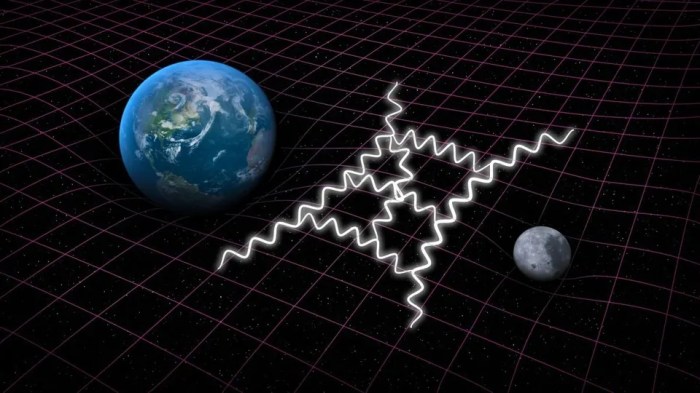
Understanding the laws of physics is not just an intellectual pursuit but a key to unlocking technological advancements and solving complex problems. From designing spacecraft to developing new medical treatments, physics plays a vital role in shaping our world. As we continue to explore the universe, the laws of physics remain our guiding principles, offering a framework for understanding the cosmos and our place within it.
FAQ Overview
What is the difference between a law and a theory in physics?
A law in physics is a well-established and universally accepted principle that describes a specific phenomenon. It is typically expressed mathematically and supported by extensive experimental evidence. A theory, on the other hand, is a more comprehensive explanation of a phenomenon that is based on a set of assumptions and postulates. It is often supported by multiple laws and can be modified or refined as new evidence emerges.
What are some examples of laws of physics that we experience in everyday life?
Examples of laws of physics we encounter daily include Newton’s laws of motion, which govern how objects move and interact. We experience gravity when we drop an object or walk on the ground. The law of conservation of energy explains why we need to eat to fuel our bodies and why a light bulb glows when electricity flows through it.
Is it possible to break the laws of physics?
The laws of physics, as we understand them, are based on extensive observations and experiments. While we may not fully understand all the intricacies of the universe, it is generally accepted that these laws are fundamental and cannot be broken. However, new discoveries and advancements in physics may lead to a deeper understanding of these laws and their potential limitations.
